Where can you find interesting wildlife in the Dallas/Fort Worth metroplex? Well, as it turns out, just about anywhere you happen to look. All you really need is a little bit of water, a reasonable amount of vegetation, and just a smidgeon of seclusion. I recently discovered one such place right in the heart of the northern Metroplex. For reason that will soon become obvious, I call this little spot Garden Inn Pond.

The formative feature of this particular small urban wilderness area is Prairie Creek. There are a multitude Prairie Creeks in the state of Texas, but the one that winds through Plano and Richardson is the one we will focus on in this instance. This creek begins as a series of small pond running through the River Bend subdivision in Plano, Texas. The stream continues southward until it flows under the George Bush Expressway and crosses into the City of Richardson. There, just a little south of the highway, the stream opens into wide, marshy basin.


The outflow of Prairie Creek continues on under Renner Road and past an unusual stair step dam of some kind. Then under a railroad bridge and on through a series of golf courses, parks, and neighborhoods, eventually merging with Spring Creek, then Rowlett Creek, before dumping into a small western finger of Lake Ray Hubbard.


Prairie Creek winds across almost twenty miles miles of north Texas real estate, but it was the strange, swampy basin that piqued my curiosity. I have been noticing the wooded area surrounding the creek and the marshy basin for years now, on my daily drive into work. But it wasn’t until I reviewed the area on Google Maps that I became truly intrigued. Aerial photographs showed this to be a very promising environment for urban wildlife, and I knew I’d have to make time to stop by and check it out.

I visited the area for the first time early one morning in April. A hotel that—for me— gives the area its name, sits high on a hill overlooking the basin. I moved down to the waterside by following a newly installed concrete trail that leads away from Garden Inn and follows the creek along its eastern bank.

I soon discovered that marsh was dominated by a lone Canada Goose. Over the course of several visits I came to know this intrepid goose. At the crack of dawn I watched him wake on his deadwood perch, stretch and exercise his wings, before entering the water and making a brief and leisurely circuit of the pond as the sun inched slowly above the horizon. Eventually, the goose would take to the air and fly away somewhere to the east for breakfast. He would always return just a short time later, usually well before I was ready to call it a day.


On a few occasions I noticed other Canada Geese fly over. Sometime a pair of them might circle once or twice overhead as if they were considering the option of landing. They always changed their minds at the last minute. The intrepid resident goose must have had his claim to the marsh unmistakably marked.
By the time the full heat of the summer had set in, the lone Canada Goose had moved on and has not yet returned.


Other species of common North Texas waterfowl also called this pond home. American Coots, Mallards, Wood Ducks, Great Egrets, and Green Herons could all be found here in varying numbers. Blue-winged Teal and Double-crested Cormorants also paid us a visit from time to time.








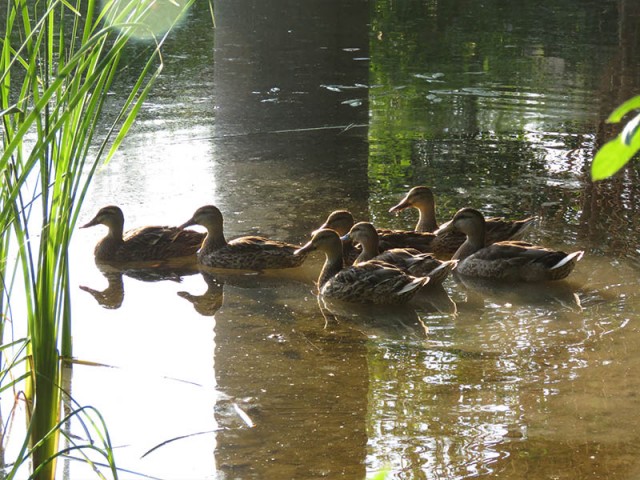


Where there are reeds and water there will be nutrias, and Garden Inn Pond was no exception. This basin acts as a natural trash filter for litter washed off our streets and alleys. These tenacious rodents—juveniles and adults—seemed unfazed by the ugly conditions that formed in some parts of the marsh.




As I made my way around to the Renner Road bridge, I soon began to discover more evidence of the exciting variety of wildlife that called this compact wilderness home. Beaver sign was unmistakable under the shadow of the bridge. Beneath the concrete structure, in the soft, silty soil, there were antlions dens and hints of other, special wildlife that would require a little luck to see in person.
One morning I had the good fortune of arriving just as a family of Raccoons was investigating a storm pipe under the bridge on the opposite side of the creek. Another time a Spotted Sandpiper was seen foraging along water’s edge.

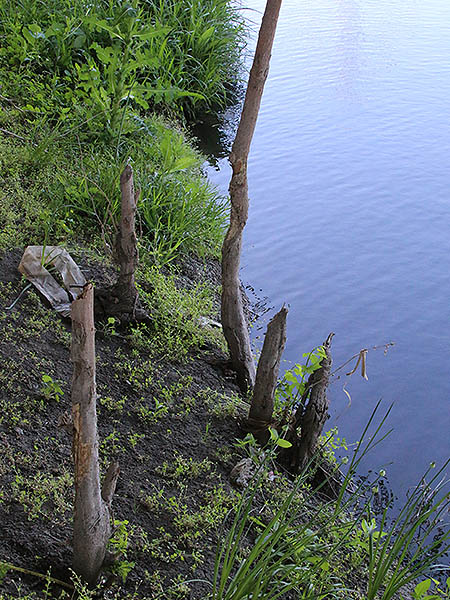





Above me, on the bridge itself, were Cliff Swallow nests by the dozens—a multitude of swift little birds ignoring the roaring traffic and vibrating bridge as they cared for their progeny. Paper Wasps and Mud Daubers also found the cold concrete of Renner Road bridge to their liking.





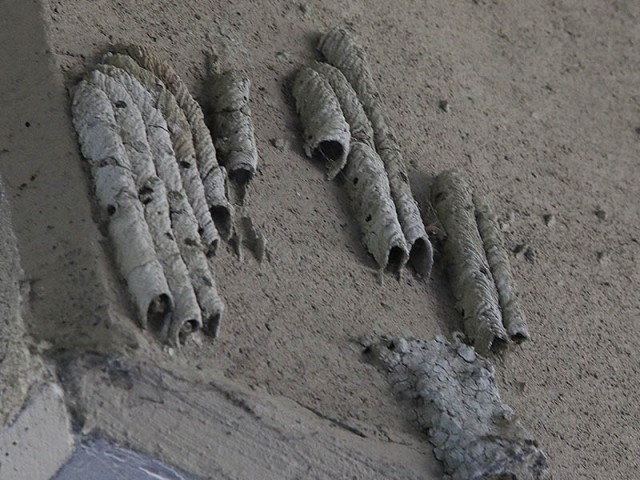
Turtles abound in these waters. River Cooters, Red-eared Sliders, Eastern Spiny Shoftshell Turtles and Common Snapping Turtles can all be found here. There are so many of these shelled reptiles in certain places around the pond that it can become a bit creepy as they crawl and slither over each other jockeying for prime basking locations.





Other reptiles are present in and around these waters as well. Snakes in particular. I encountered a number of big fat Yellow-bellied Water Snakes retreating through the tall grass as I explored waterside. Then there was this five-foot long Texas Rat Snake I met face to face when I entered the woods for the first time. He stuck around long enough for me to take a few pictures, but when he decide to bow out, he did so by climbing the nearest tree and escaping through the branches at the top of the canopy (see the video below).

Other cold-blooded creatures calling the marsh home included both predator and prey. Blanchard’s Cricket Frogs were present in abundance, as they tend to be. Green Sunfish and Largemouth Bass could be seen swimming through the clear water near under the Renner Road bridge. Diamond-backed Water Snakes hunted both fish and frogs in the twilight of predawn.



One morning, an unusual movement caught my eye from deep inside a reed bed. I quickly maneuvered into position for a better look. It was a small wading bird known as a Sora—a bird that I had never seen before.


When I explore a new area like this I rarely go with a set of fixed expectations in mind. I enjoying finding what I find, and letting the discovery part of the process take care of itself. That approach makes a finding like this Sora all the more satisfying. Its nice to know that after ten plus years of engaging in this pursuit, it is still possible for me to have exciting firsts like this one.
Because Soras spend much of their time foraging inside masses of marshy reed beds, they are seldom seen. But, I will bet that many of you have heard there distinctive whinny from time to time. Give the recording below a listen to see for yourself.
Along the shore and in the margins an abundance of birds and insects could be found. Beautiful wildflowers and fruit laden trees accented the landscape with appealing colors.





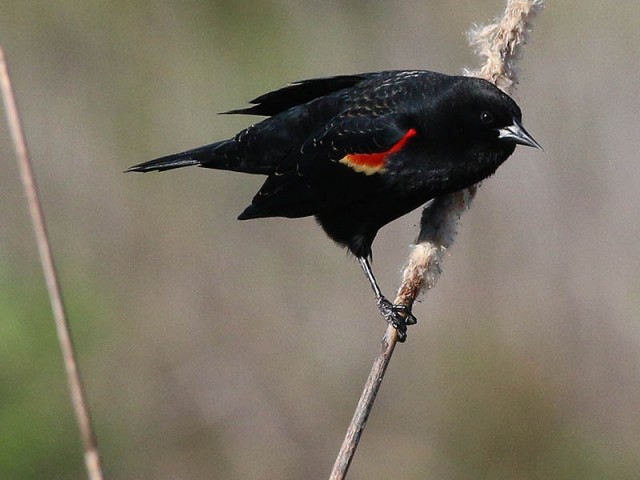


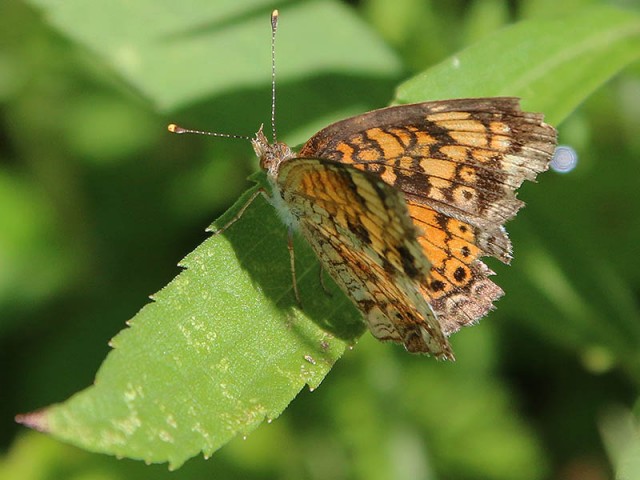





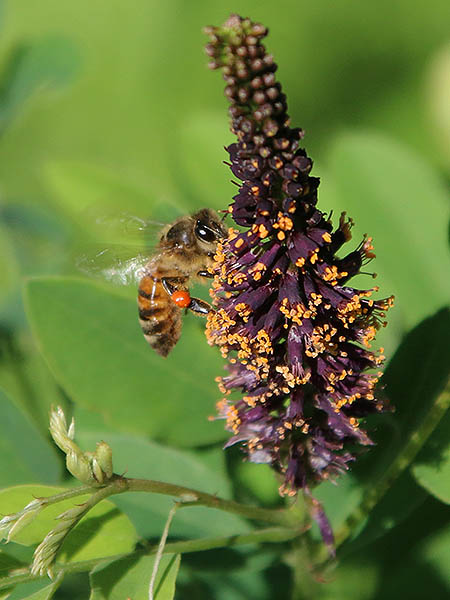






Looking skyward I fequently spotted larges flocks of Cedar Waxwings fly by at fairly regular intervals. Even higher, groups of Franklin’s Gull could be circling lazily and drifting northward. Once a Swainson’s Hawk did a low altitude fly over—really spectacular!

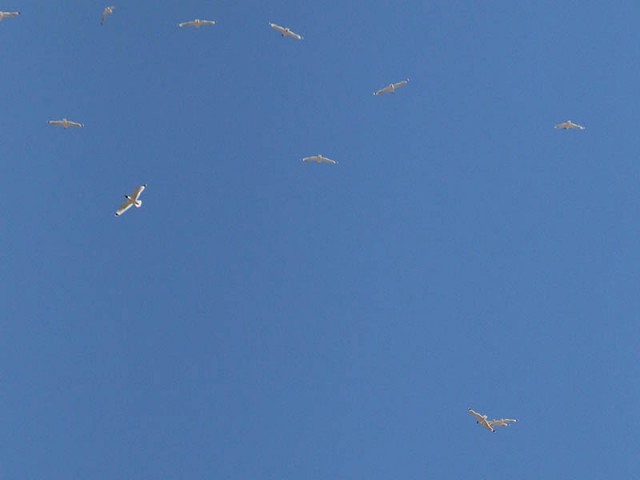

A seemingly fearless Northern Mockingbird kept watch over the hotel parking lot. From his perch on the small ornamental trees surrounding Garden Inn, this little song bird would launch attacks on birds much larger than himself. On one occasion I watched him drive off a group of shiftless American Crows. Another time, the brave bird rose high into the air to do battle with a passing Red-tailed Hawk. No wonder this mighty little guy was chosen to be the state bird of Texas!



In the short grass between the concrete trail and the hotel’s parking lot I frequently spotted a pair of Killdeer scurrying about. Early in the summer, I was pleased to find that the couple successfully raised a brood of four. These young Killdeer followed their parents around the hotel grounds, never straying too far, and staying in constant contact with their cheeps and chirps.

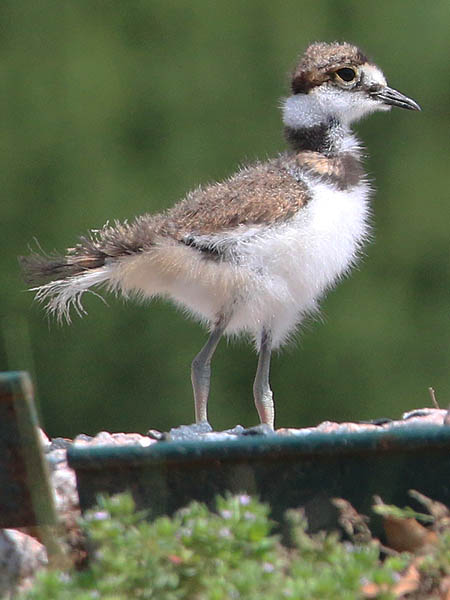
After dark, a quick trail camera survey revealed a bit more about the wildlife calling Garden Inn Pond home and completed the picture. All of the expected nocturnal mammals were present and accounted for.













Yet another spectacular entry, Chris. 🙂 I love finding these sorts of spots — I’ll have to check this one out next time I’m around Plano, I may have to stop here. 🙂
Next time you are in Plano to check this place out, drop me a line, and I will go with you!
-CJ
That was awesome. I grew up not far from there. you did an amazing job and I greatly appreciate it!!!
I just got a new camera and am going to be visiting this hidden gem first chance I get! Thank you so much for sharing! (Any concerns/sitings of venomous snakes?)
I did not see any venomous snakes on my visits, but you always need to watch where you step in a habitat like this. Use just a little extra caution if you venture off trail, and you should be fine.
This is soo interesting. I’m familiar with the more southern part of Prairie Creek that is the linear park going through the actual Prairie Creek neighborhood. It’s a lovely place to take a walk! I usually begin near the waterfall, likely man made, that is near Falling Creek Drive and always see mallards, and even have gotten a glimpse of wood ducks a couple of times. Thank you for the information about other parts of it.